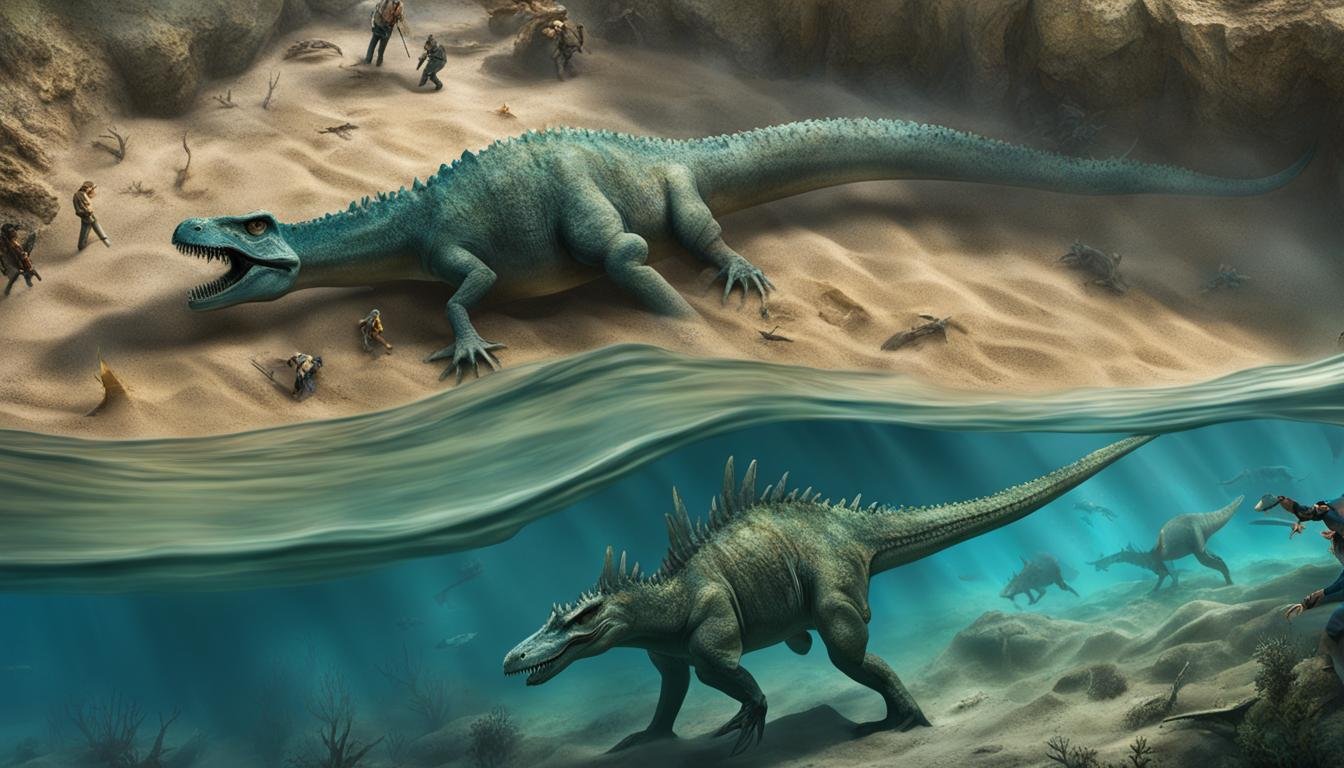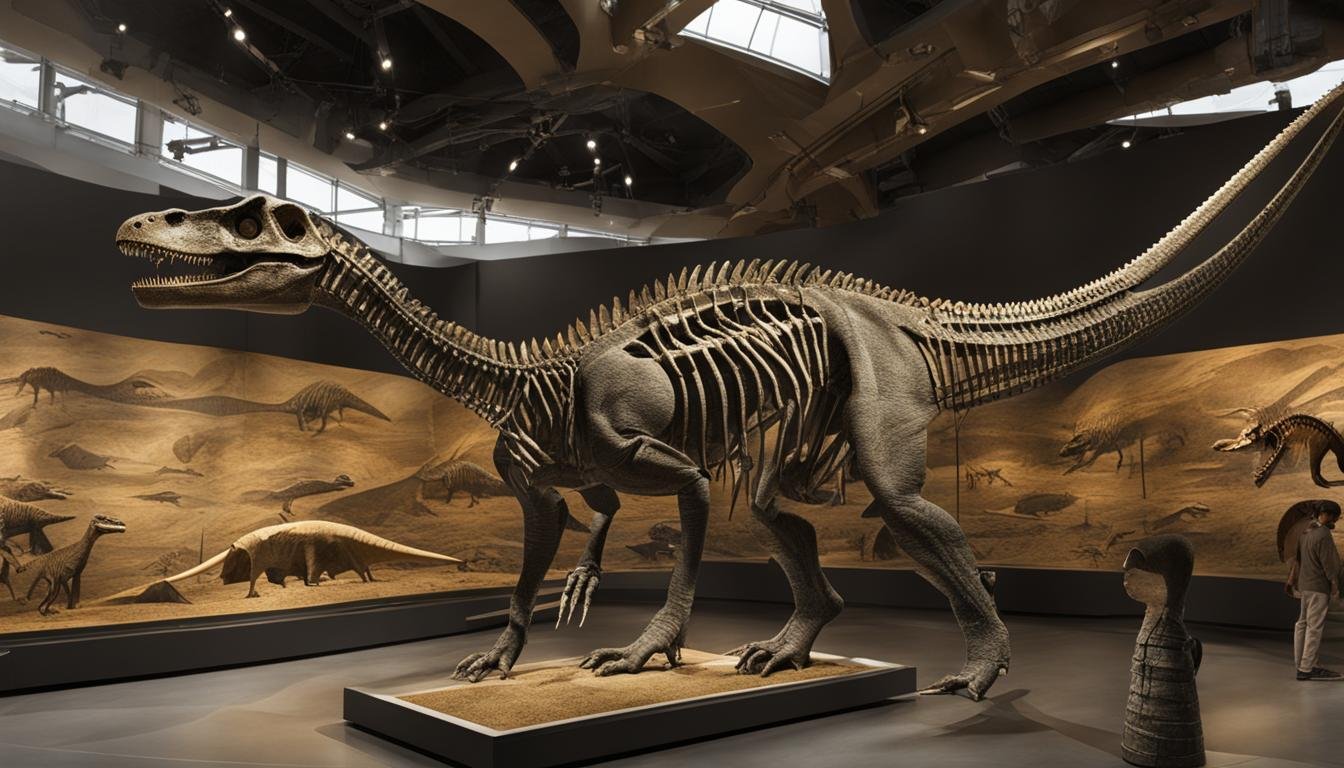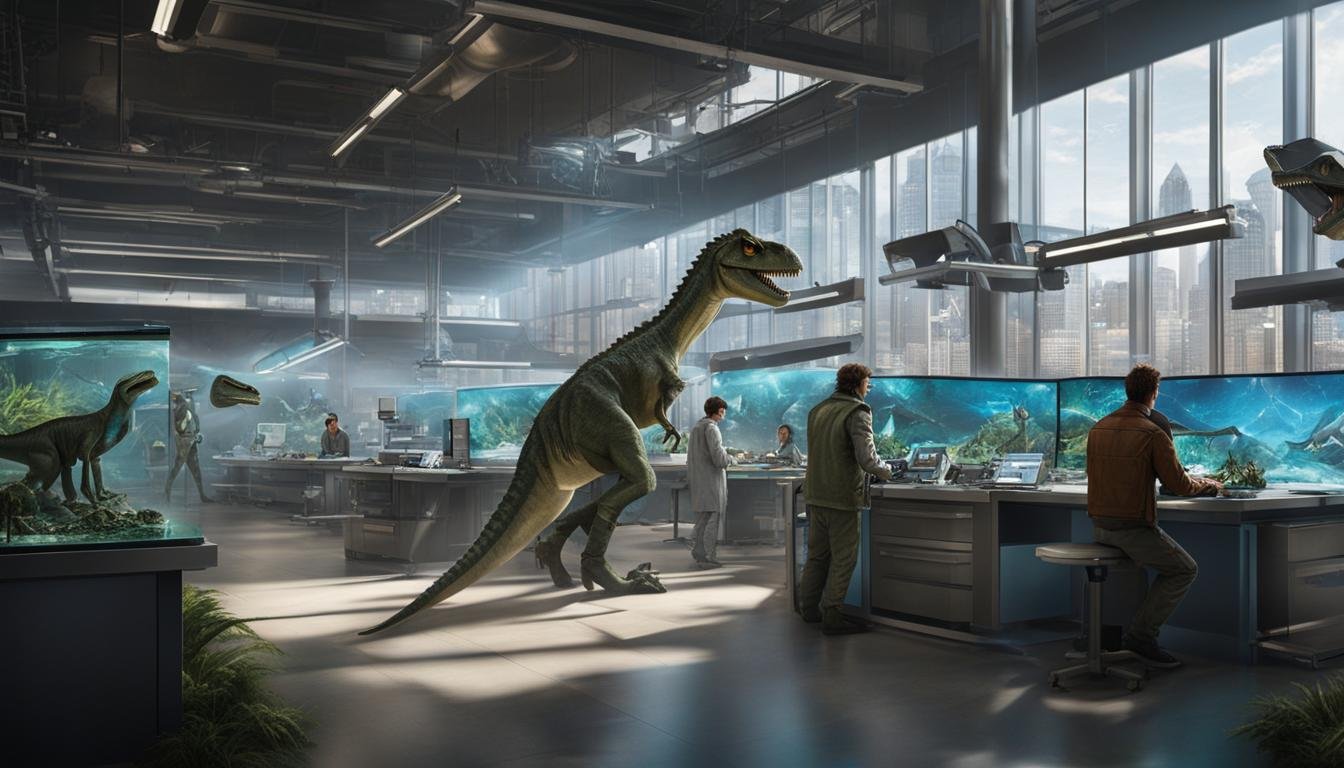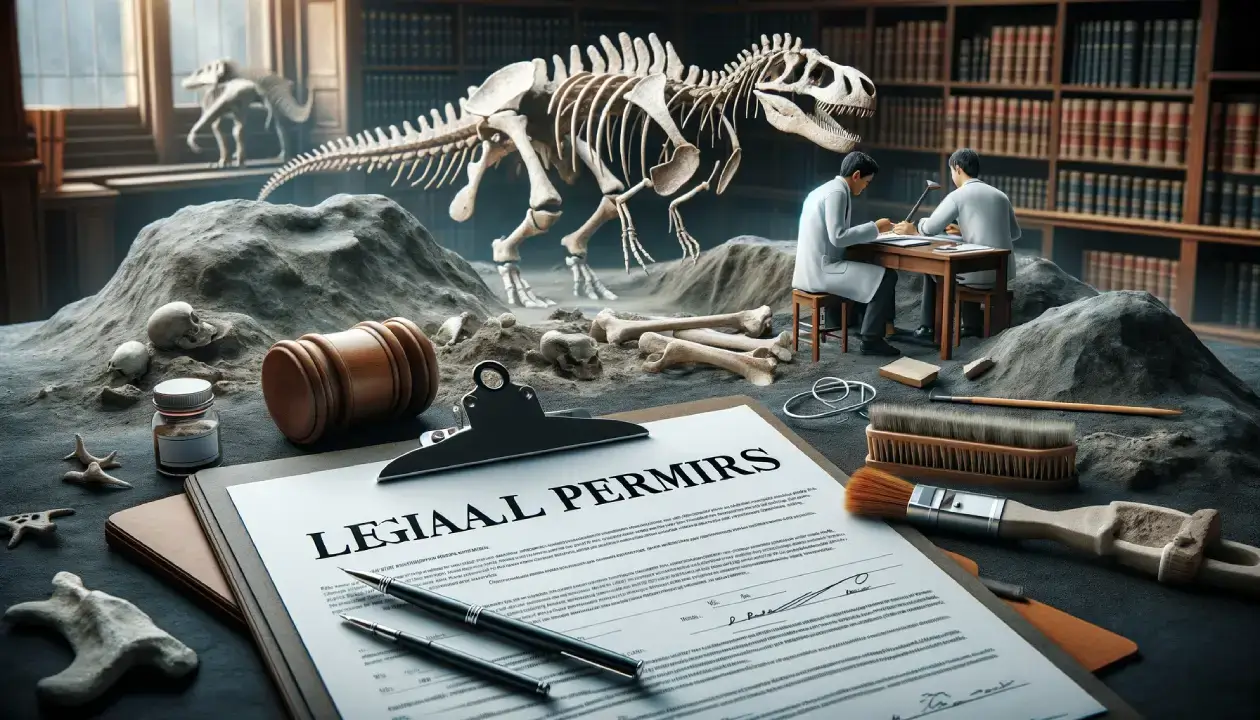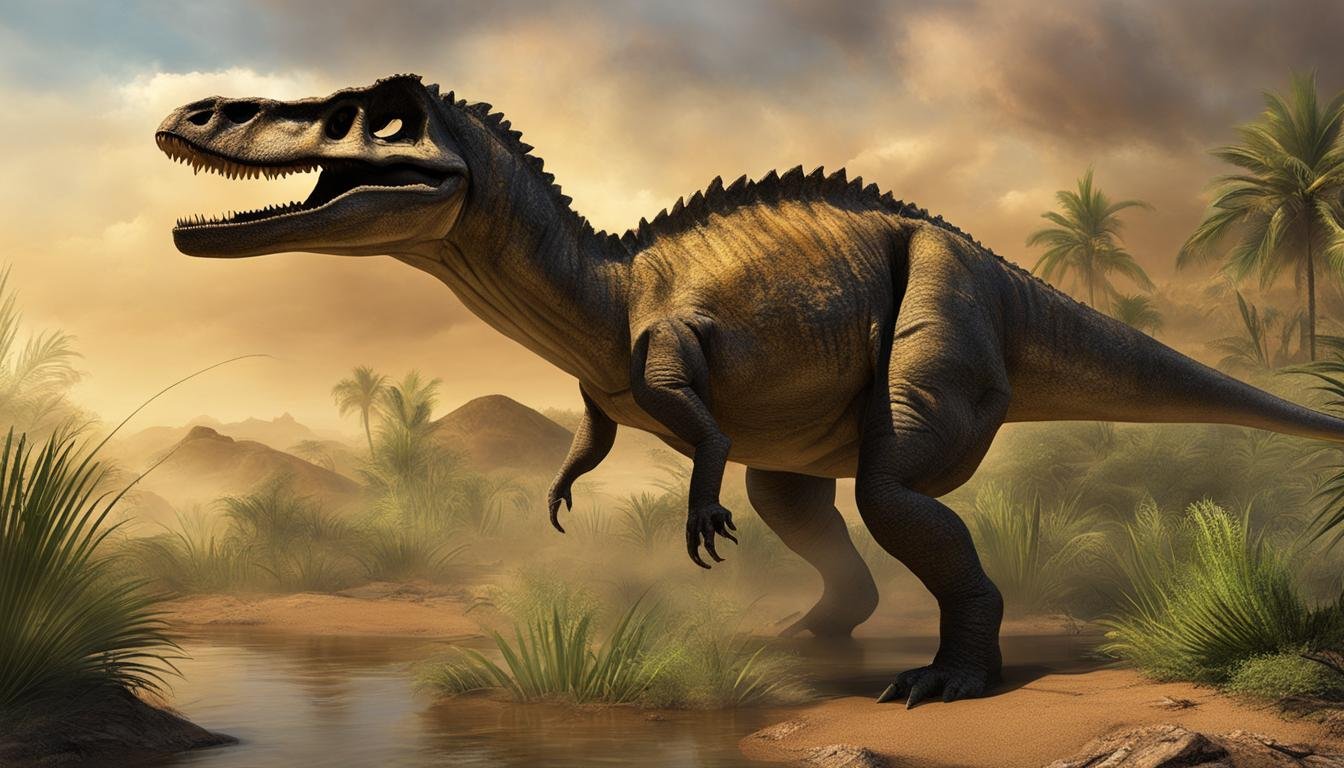Underwater dinosaur fossil excavations offer a captivating glimpse into the ancient marine world that thrived millions of years ago. These excavations have unearthed rare and significant dinosaur fossils, shedding light on the evolution and behaviors of marine creatures. From the depths of the Western Interior Seaway in Saskatchewan to the icy waters of Antarctica, scientists have made groundbreaking discoveries in the field of underwater paleontology, deepening our understanding of prehistoric life beneath the waves.
| Key Points | Takeaways |
|---|---|
| Significance of Underwater Excavations | Uncover rare and significant fossils, deepening understanding of prehistoric marine life. |
| Discoveries in Saskatchewan | Over 3,100 fossils found, offering insights into plesiosaurs and mosasaurs behaviors and environment. |
| Elasmosaur Discovery in Antarctica | One of the largest elasmosaurs found, enhancing knowledge of marine reptiles in the Southern Hemisphere. |
| Largest Ichthyosaur in England | Discovery of a massive ichthyosaur skeleton, contributing to understanding of Jurassic marine life. |
| Feeding Habits of Marine Reptiles | Analysis of teeth and stomach contents reveals diets and ecological roles of plesiosaurs and ichthyosaurs. |
| Environmental Changes and Marine Life | Study of ancient ecosystems helps understand the impact of environmental changes on marine biodiversity. |
| Importance of Protecting Fossil Sites | Preservation is crucial for future research and understanding Earth’s history and prehistoric ecosystems. |
Unearthing a Trove of Marine Fossils in Saskatchewan
In the vast underwater depths of Saskatchewan, Canada, lies a hidden treasure trove of marine fossils dating back 75 million years. This remarkable underwater excavation site has yielded over 3,100 fossils, predominantly belonging to plesiosaurs and mosasaurs, ancient marine reptiles that roamed the Western Interior Seaway during the Late Cretaceous period.
These fossils offer valuable insights into the lives of these majestic creatures and the prehistoric marine ecosystem. The site provides evidence of juvenile plesiosaurs, shedding light on their reproductive behavior and suggesting that this area may have served as a nursery for these marine reptiles.
“The excavation site also presents a unique preservation of bones, indicating unusual decay patterns and possible scavenging activity, which hints at a toxic environment in this ancient underwater ecosystem.”
Excavating underwater fossils presents its own set of challenges and requires specialized paleontological excavation methods. Scientists meticulously sift through layers of sediment, carefully cutting and removing the surrounding rock to reveal the delicate fossils without causing damage.
The findings from this underwater excavation site in Saskatchewan provide invaluable contributions to our understanding of prehistoric marine life and the evolution of these magnificent creatures. Through scientific analysis, researchers can gather essential data on their anatomy, behaviors, and the ancient underwater environment they called home.
| Fossil Type | Number of Fossils |
|---|---|
| Plesiosaurs | 2,500+ |
| Mosasuars | 600+ |
Antarctica’s Giant Elasmosaur: A Window into the Past
Scientists have recently made a remarkable discovery in Antarctica – the fossilized remains of a 15-ton elasmosaur, one of the largest and most complete specimens ever found. Belonging to the genus Aristonectes, this elasmosaur was a type of plesiosaur that lived during the Cretaceous period. This exciting find offers important insights into the diversity and evolution of marine reptiles in the Southern Hemisphere.
The excavation process in Antarctica was particularly challenging due to the frozen conditions and limited excavation windows. However, the efforts of the scientific team were rewarded with the recovery of a remarkable specimen that adds to our knowledge of prehistoric marine life. The giant elasmosaur provides valuable information about the size, anatomy, and behaviors of these ancient creatures, helping us piece together the puzzle of Earth’s history.
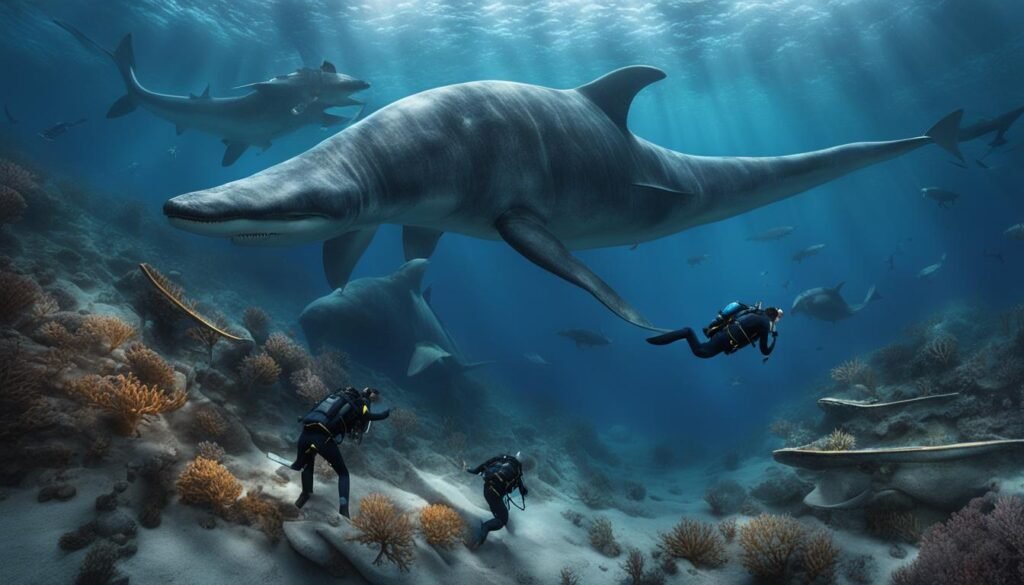
By studying the remains of this giant elasmosaur and other marine reptiles, scientists can gain valuable insights into the ancient marine ecosystems and the adaptations of these animals to their environment. The discovery of this fossilized giant challenges our understanding of the size limits of elasmosaurs and sheds light on the previously unknown variations within the plesiosaur family. This information contributes to our understanding of the intricate web of life that existed millions of years ago, providing valuable perspectives for ongoing research and future discoveries.
The Largest Ichthyosaur Skeleton Found in England
A groundbreaking discovery was made at the Rutland Water Nature Reserve in England, where the remains of the largest ichthyosaur ever found in Britain were unearthed. This ichthyosaur skeleton, measuring about 10 meters in length, is one of the most complete and largest ever discovered worldwide. Ichthyosaurs were marine reptiles that lived during the Jurassic period and were known for their fish-like appearance, being often referred to as “sea dragons.”
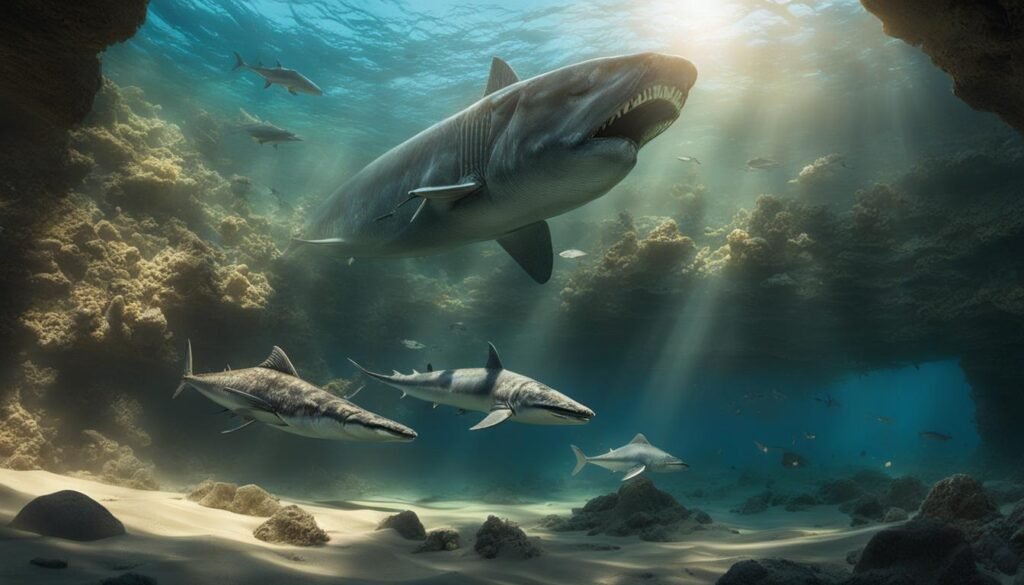
The excavation project faced challenges due to the frozen lagoon and the need to protect the natural habitat, but the successful recovery of the skeleton provides valuable insights into the anatomy and behavior of these ancient marine creatures.
A comparison of the size of the ichthyosaur skeleton found in England with other notable ichthyosaur discoveries around the world is presented in the table below:
| Ichthyosaur Discovery | Length | Location |
|---|---|---|
| Largest Ichthyosaur in England | 10 meters | Rutland Water Nature Reserve, England |
| Ichthyosaur Found in Germany | 9 meters | Holzmaden, Germany |
| Ichthyosaur Skeleton in Nevada | 7 meters | Battle Mountain, Nevada, USA |
This comparison highlights the exceptional size of the ichthyosaur discovered in England, further emphasizing its significance in paleontological research and our understanding of ancient marine life.
Uncovering the Feeding Habits of Marine Reptiles
Through the study of underwater dinosaur fossil excavations, scientists have gained valuable insights into the feeding habits of marine reptiles. Analysis of teeth and stomach contents of plesiosaurs and ichthyosaurs has revealed fascinating details about the diet and feeding strategies of these ancient creatures.
Marine reptiles such as plesiosaurs and ichthyosaurs were apex predators, occupying the top of the prehistoric marine food chain. They had a diverse feeding repertoire, allowing them to thrive in different ecosystems and adapt to changing environmental conditions. Fossil evidence suggests that these reptiles feasted on a variety of prey, including other marine reptiles, fish, and mollusks such as ammonites.
“The examination of teeth and stomach contents of plesiosaurs and ichthyosaurs provides compelling evidence of their role as apex predators in the ancient marine ecosystem,” says Dr. Samantha Carter, a paleontologist specializing in underwater fossil excavations. “These findings give us valuable insights into the ecological dynamics of prehistoric oceans and the interplay between different marine species.”
The discoveries made through underwater excavations have expanded our understanding of the feeding habits and ecological roles of marine reptiles. By reconstructing the diet of these ancient creatures, scientists can piece together the intricate web of life that existed millions of years ago, shedding light on the complex interactions between marine organisms and their environment.
Comparing the Feeding Habits of Plesiosaurs and Ichthyosaurs
| Plesiosaurs | Ichthyosaurs |
|---|---|
| Predatory marine reptiles | Predatory marine reptiles |
| Had long necks and paddle-like limbs | Had streamlined bodies and fish-like tails |
| Specialized teeth for catching and grasping prey | Sharp teeth for slicing through prey |
| Feasted on fish, squid, ammonites, and other marine reptiles | Feasted on fish, squid, ammonites, and other marine reptiles |
| May have hunted in groups | May have hunted individually or in small groups |
The table above provides a comparison of the feeding habits and physical characteristics of plesiosaurs and ichthyosaurs. While both were apex predators with similar diets, they had distinct anatomical features and possibly different hunting behaviors. These differences allowed them to exploit different ecological niches within the marine ecosystem, contributing to the overall biodiversity of prehistoric oceans.
Ancient Marine Ecosystems and the Impact of Environmental Changes
Exploring underwater dinosaur fossil excavations provides us with a unique opportunity to understand ancient marine ecosystems and the impact of environmental changes. By studying the fossil record, scientists are able to piece together the puzzle of Earth’s history and gain insights into how climate fluctuations shaped marine life millions of years ago.
One significant finding from these excavations is the evidence of euxinia, a condition where oxygen levels in the ocean are extremely low. Fossil sites such as the Western Interior Seaway in Canada and the Antarctic Peninsula reveal layers of sediment indicating periods of euxinia, which can have a detrimental effect on marine life. These findings serve as a sobering reminder of the potential consequences of global warming and rising sea levels on coastal basins today.
Climate change is a complex phenomenon, and studying the impact of past environmental changes on marine life can help us better understand and predict the effects of ongoing climate challenges. The fossil record gives us a glimpse into how marine ecosystems responded to changes in temperature, sea levels, and other environmental factors. By analyzing the diversity and distribution of marine species during different geological periods, scientists can identify patterns and draw comparisons to the present day.
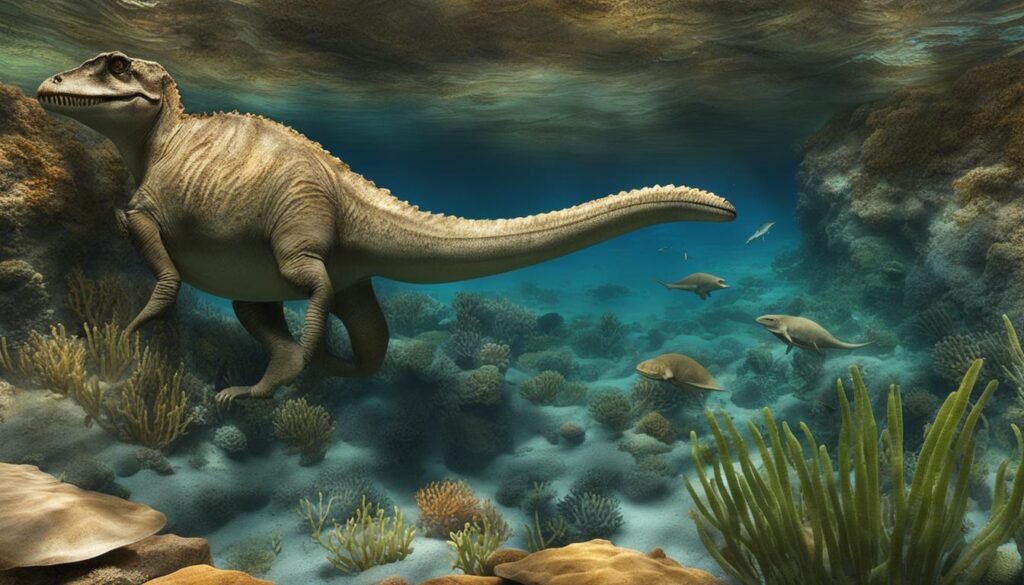
The Impact of Climate Changes on Marine Life
Through underwater dinosaur fossil excavations, we are able to witness the resilience and adaptability of marine life in the face of environmental changes. Ancient marine ecosystems went through periods of stability, as well as periods of rapid transformation. The shifting climate conditions forced marine species to adapt or face extinction, resulting in the evolution of new adaptations and the emergence of new species.
This knowledge is crucial for our current efforts to protect marine ecosystems. By understanding how marine life responded to past environmental changes, scientists and policymakers can work towards implementing effective conservation strategies to mitigate the impact of climate change on our oceans. The lessons we learn from the past can guide us in making informed decisions for a sustainable future.
In conclusion, underwater dinosaur fossil excavations provide us with valuable insights into ancient marine ecosystems and the impact of environmental changes. By studying the fossil record, we can gain a better understanding of how marine life adapted to fluctuating climate conditions and how we can protect and preserve our oceans in the face of ongoing climate challenges.
Looking to the Future: Protecting Marine Fossil Sites
The discoveries made through underwater dinosaur fossil excavations underscore the importance of protecting these valuable scientific sites for future research. Fossil preservation techniques and conservation efforts play a crucial role in safeguarding the integrity and scientific significance of these underwater fossil sites. As technology and scientific methods advance, ongoing excavations and research in places like Saskatchewan, Antarctica, and England continue to yield new insights into the ancient marine world and contribute to our understanding of Earth’s history.
Preserving marine fossil sites ensures that future generations of scientists and researchers have the opportunity to study and learn from these ancient remnants. These sites act as time capsules, providing a window into the past and allowing us to unravel the mysteries of prehistoric marine life. By protecting these sites, we safeguard invaluable scientific data and ensure that we can continue to broaden our knowledge of Earth’s history and the evolution of life on our planet.
Conservation efforts also extend beyond the preservation of fossils themselves. Many of these sites are located in sensitive environments, such as national parks or protected marine areas. By implementing proper conservation practices, we can ensure the long-term sustainability of these ecosystems while allowing for scientific exploration and discovery.
Scientific Significance of Underwater Fossils
Underwater dinosaur fossils provide unique insights into the ancient marine world. These fossils serve as a record of past biodiversity, allowing scientists to reconstruct ecosystems and understand the interactions between different species. They provide evidence of prehistoric food chains, migration patterns, and adaptations to changing environments.
“Underwater dinosaur fossils serve as a record of past biodiversity, allowing scientists to reconstruct ecosystems and understand the interactions between different species.”
Furthermore, the study of underwater fossils contributes to our understanding of the Earth’s history and the impact of environmental changes. By examining how marine life responded to past climate shifts, scientists can better predict and mitigate the effects of current and future environmental challenges, such as global warming and rising sea levels.
| Importance of Protecting Marine Fossil Sites | Conservation Efforts |
|---|---|
|
|
Conclusion
Underwater dinosaur fossil excavations have revolutionized our understanding of ancient marine life by unearthing remarkable specimens and revealing insights into the behaviors and ecosystems of prehistoric creatures. Through extensive paleontological research, these fossil discoveries have shed light on the rich diversity of ancient marine life during different geological periods.
From the dense concentration of marine reptiles in Saskatchewan to the giant elasmosaur in Antarctica and the exceptional ichthyosaur in England, these findings have captured the attention of scientists and the public alike. The meticulous excavation and preservation efforts have allowed us to piece together the puzzle of ancient marine ecosystems and further our knowledge of Earth’s history.
As we continue to explore and study these underwater fossil sites, it is crucial to recognize their scientific significance and ensure their protection. By safeguarding these valuable resources, we can continue to unravel the mysteries of ancient marine life and gain insights that may even help us navigate the challenges faced by modern-day marine ecosystems.

